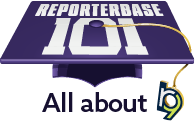Lesson #96
Tools – Tag Manager function
Tags — the labels you create in RB9 to organize entities with — can be used to quickly print envelopes or labels for targeted mailings, or to send bulk emails to specific groups. By organizing clients with accurate qualifiers you can do a better job with your outreach efforts. You can also use tags to organize resources and job locations, then use this function to contact them by group.
If you use tags to organize entities, Tag Manager is where you can look up entities by tag, add or remove tags from multiple entities at once, print envelopes and labels for specific groups, and bulk email tagged entities.
Set up tags to re-use
Before using Tag Manager set up tags for contacts, firms, resources, and locations in Lists. You can use any word or phrase as a tag, and use as many tags as you want to define and organize entities. Tags are especially helpful in organizing firms for marketing purposes and contacts for customer service treatment. For example you might have a tag for your 25 best clients (“Top 25”) who require constant monitoring.
Setting up tag lists in RB9 is recommended over entering tags manually in each entity. With preset lists users select tags from drop-downs — which is faster than typing and eliminates misspellings — plus everyone in your company will have the same options to select from. A tag manually entered in one entity is not available to select later until you add it to a tag list.
Apply tags to entities
You can tag entities one at a time — for example tag new customers as you enter them in RB9. But if you have a group of entities to tag, use Tag Manager where you can bulk update a set of entities at once. In Tag Manager you can search for firms, contacts, resources, and locations by name or tag. If searching by tag you can select one from the contextual drop-down or key in a partial/full tag name in the field to find manually entered tags. You can also search for contacts by firm.
Using tags in Tag Manager
The results grid in Tag Manager displays the name and address of each entity that matches your search criteria. It also shows if a displayed entity is active — e.g., a client who is still scheduling jobs. This is useful if you want to send emails, letters, etc. to only active or inactive clients.
You can sort your results in the grid by one or more columns in ascending or descending order (but when you exit the function, RB9 will revert back to the default order). Export the list as an Excel spreadsheet or a CSV (comma-separated values) file to save, print, share, or use in other applications.
After finding entities in Tag Manager you can view the details of any entry in the results by clicking its hyperlink.
Add tags to multiple entities at once by selecting them in Tag Manager results, then choosing a tag in the drop-down and saving your choice.
Remove a tag from a group of entities at once is a just-as-easy similar process.
If you want to do a mass mailing from RB9, first find firms, contacts, resources, or locations in Tag Manager. Then print envelopes or mailing labels for the selected entities. Or similarly send contacts, resources, or locations an email directly from this function.
NOTE: This is an RB9-only function. It is not included in RB Lite.
TL;DR: After tagging entities use the Tag Manager to look up tagged entities, email selected entities, print envelopes or labels for targeted mailings, quickly remove tags from entities, and add more tags to entities.
RB concepts in this lesson
Contact: Person who works for a firm you do business with — such as attorneys.
Entity: Individual, business, place, or discrete part of your company — such as revenue centers or branch offices. More >
Firm: Business you provide services to — usually law firms.
Location: Place where jobs occur — such as court rooms.
Resource: Person or thing that provides your business with a service — such as reporters.
Tags: Labels you create in RB to organize entities with relevant, searchable keywords or phrases.

